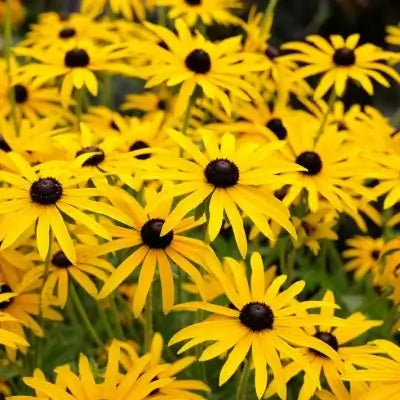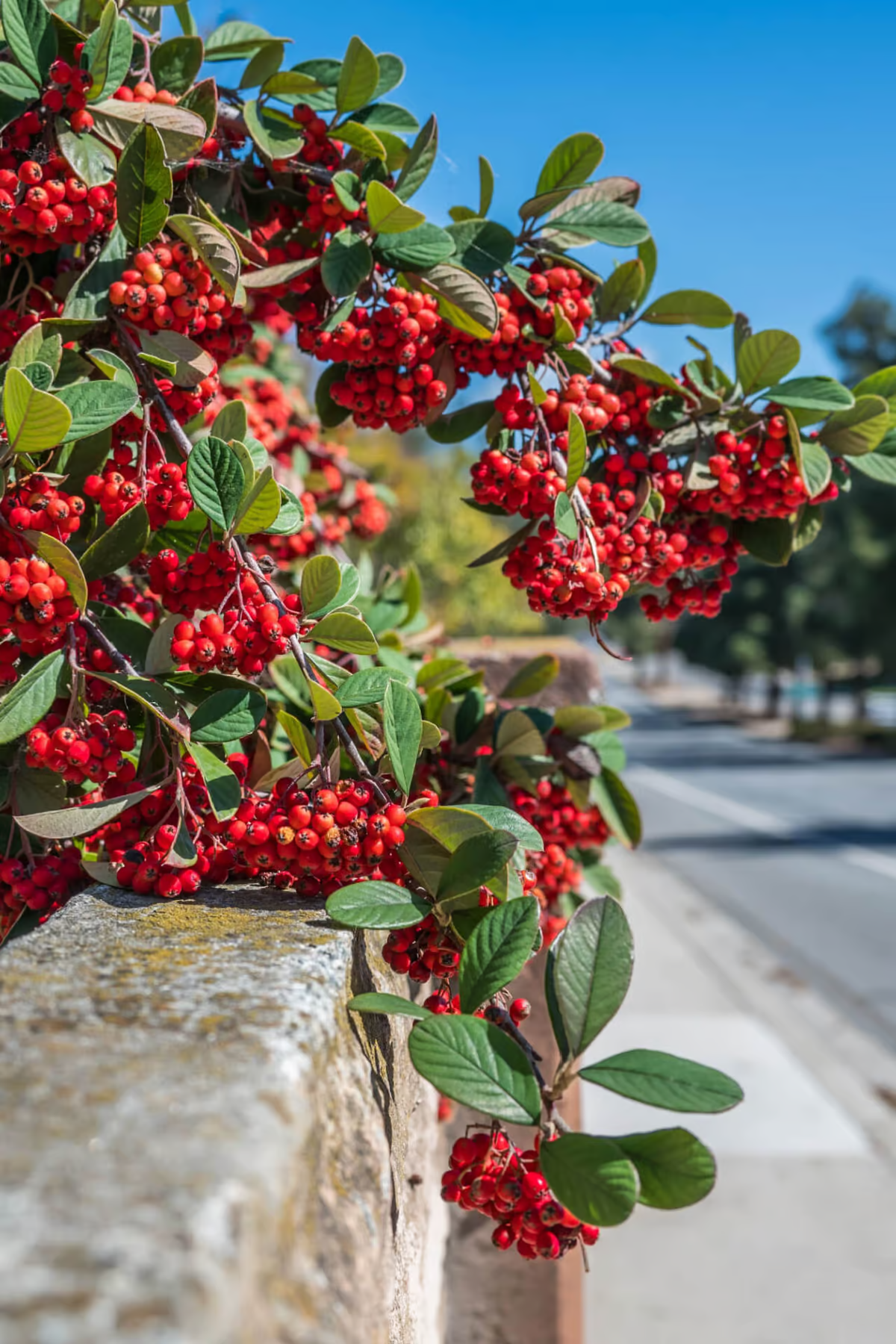
Perennials
Stunning fall foliage display
Excellent for natural hedges
Thrives in various soil types
Thrives in
ZONE 4ZONE 5ZONE 6ZONE 7ZONE 8Planting Season:
Nov-AprilWhen you add one plant to cart, it automatically adds the second one free on Bogo deals.
Red Chokeberry has clusters of delicate white to pinkish flowers that emerge in the spring and later give way to bright rose berries that persist through the winter, providing a pop of color during the colder months.
Aronia comes from a Greek word for the shrub species that the plant's fruits resemble. Arbutifolia refers to the appearance of its leaves, similar to the foliage of the arbutus tree. The shrub's tart berries earned it its name.
The deciduous shrub graces many landscapes throughout North America with its distinct beauty. Often found in both dry and wet thickets, the shrub grows in a vase shape and can form dense colonies. The typical width of this plant is between 3 and 6 feet, and it reaches heights between 6 and 12 feet. Its ability to spread makes it a practical addition to low-lying areas and shorelines that need protection. However, its profound aesthetic attributes make it an ideal addition to any outdoor space.
It makes captivating transformations during each season. As spring arrives, the plant produces delicate, silky flowers ranging from white to pink. Its leaves are a rich green color during the summer. Those leaves may turn a purple or scarlet-orange hue throughout the autumn months.
Also, its rose pear-shaped berries emerge in clusters during the fall, decorating the shrub with even more warmth. That warm-looking appearance remains even during the coldest winter months with the plant's scarlet-colored branches. Its multi-stemmed structure adds to its visual appeal.
Since most birds do not eat the tart berries, people who plant Red Chokeberry often use them to make canned jams or jellies. People who enjoy watching bees and butterflies in spring and summer can attract them with the shrubs. Those who like fall's rich, dark colors can appreciate the plant's autumn look.
Since the shrub has such a striking bark color, it also makes a good choice for people who enjoy winter gardens. It proves that nature can create a different level of beauty during each season. With its adaptability in many landscapes, the resilient shrub can create rows or accentuate other plants.

Bloom Season
Spring
Bloom/Foliage Color
White
Height at Maturity
Under 10 Feet
Care
Red Chokeberry (Aronia arbutifolia) thrives in well-drained soil and prefers acidic to neutral pH. Trim annually to keep shape and remove dead wood. Once established, it’s drought-tolerant but benefits from occasional watering during dry spells.
Plant Reproduction
Red Chokeberry spreads through suckers, forming colonies.
Plant bare-root shrubs during the more excellent spring or fall months, from November through April. Dig a hole twice as wide as the root system and slightly more profound than its height. Position the shrub so that the top of the roots is level with the ground, and put back the soil dug over the roots. Apply a 2-3 inch layer of mulch around the base to retain moisture and suppress weeds, ensuring the mulch does not touch the shrub's stem. Water regularly, especially during the first year, to establish strong roots. Prune shrubs as needed to promote healthy growth. In the spring, fertilize with a balanced, slow-release fertilizer suited to the specific needs of the shrub.
Shipping date depends on the date displayed and chosen when you order from the product's page.
We only accept returns on plants verified dead. If you think your plants have died, we offer a 1 year warranty, please use use this File a Claim Link to verify dead plants and start with return warranty process.




Wildlife Attraction:
The berries attract birds and other wildlife, creating a lively and dynamic garden environment.
Stunning Red Berries:
The Red Chokeberry produces vibrant red berries that add a burst of color to your garden, providing visual interest throughout the year.
Low Maintenance:
This shrub is hardy and easy to care for, requiring minimal effort to maintain its beauty and health.
Versatile Planting:
The Red Chokeberry thrives in a variety of soil types and conditions, making it a versatile choice for different garden settings.
Caring Tips
Each box contains detailed care instructions and information about your product. But here's the basics.
Care Tips
Red Chokeberry (Aronia arbutifolia) thrives in well-drained soil and prefers acidic to neutral pH. Trim annually to keep shape and remove dead wood. Once established, it’s drought-tolerant but benefits from occasional watering during dry spells.
Light Requirements
Red Chokeberry (Aronia arbutifolia) flourishes in total sun to part shade. It favors at least 4-6 hours of direct sunlight daily but can tolerate some shade, making it versatile for various garden conditions. The full sun enhances its growth and vibrant fall color.
Hardy Planting Zones
4 • 5 • 6 • 7 • 8
How often should I water my plants?
How do I know if my plant is getting too much or too little sunlight?
What should I do to prepare my plants for winter?
What are the signs that my plant needs fertilizing?
How can I prevent pests from damaging my plants?
How do I choose the right plant for my climate zone?